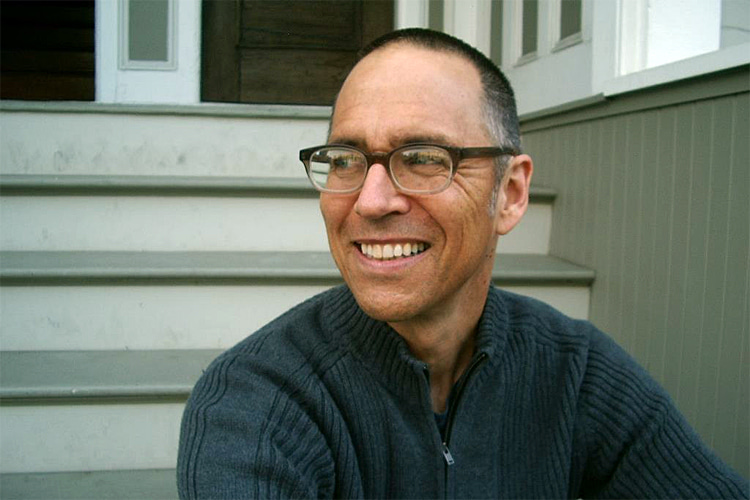
Nobody has written more about surfing than Matt Warshaw. Here’s the story of a surfer who traded his jersey for a career dedicated to words that matter to surfers.
Matt Warshaw was born on May 8, 1960, in California.
His first encounter with surfing occurred at the age of age six when his uncle, Daniel – a surfer – pushed him across a pool on a surfboard in Tarzana.
Two years later, his family moved to Venice, and Matt was destined to be near the ocean. But not forever.
The young grom began bodysurfing before receiving his first surfboard at age nine – a 7’4” fire-engine red cut-down pintail with no rocker from his uncle.
Meeting Jay Adams
In 1969, Matt met iconic skater Jay Adams, a year younger but already a fearless, charismatic presence.
Jay’s stepfather, Kent Sherwood, ran the surf concession at Pacific Ocean Park (POP) Pier, where Matt and Jay would watch Jay surf tiny waves on a psychedelic mini-longboard.
That summer, Jay’s mother, Philaine Romero, drove them daily to Santa Monica Pier, where they learned to surf together.
Matt’s first custom board was a Jeff Ho model, stolen shortly after.
His replacement, unbeknownst to him, was the first-ever Zephyr surfboard – a budget line before the skate team existed.
Though not part of the core legendary Z-Boys, Matt and Jay surfed and skated together at Venice Beach and Santa Monica during the convergence of surf and skate culture.
Those were actually critical times, especially for the explosion of skateboarding as surfing’s dry street alternative.
Jay’s wild energy – whether eating absurdly spicy food or always going for half-court shots – rubbed off on Matt.
Midway through seventh grade, Matt moved to Beverly Glen, then Manhattan Beach, avoiding Venice’s escalating chaos.
By 1971, Matt and Jay were surfing Malibu, where they were adopted by older surfers like Davey Smith, Kurt Murray, and Mike Marcelino.
Turning Pro
Six years later, at 15, Warshaw placed 6th in the first-ever Katin Pro-Am, beating Larry Bertlemann at Huntington Cliffs. It seemed like a promising start.
As the decade turned, Matt dropped out of college to work in a surf shop.
In 1982, Warshaw reached 43rd in the world rankings, highlighted by a 9th-place finish at the Op Pro, where he defeated Bobby Owens.
However, the Californian decided to put an end to his pro surfing career after a frustrating performance at the Stubbies Classic in Australia.
After retiring from competition, Matt worked at ET Surfboards before co-founding South Bay Surfer mag in the early 1980s.
And then, after a short stint at Breakout magazine, Steve Pezman hired Warshaw to join Surfer Magazine.
The publication’s glorious post-shortboard revolution era had him teaming up with legends like Derek Hynd and Art Brewer.
Matt became editor of Surfer for six months before leaving in 1990 to study at UC Berkeley, where he took a BA in History (1993), graduating Phi Beta Kappa.
During this period, he still found time to score San Francisco’s Ocean Beach.

The Encyclopedia of Surfing Era
In the mid-1990s, unsure of his next move, Matt’s father suggested, “Why don’t you write an encyclopedia?”
And so, Warshaw’s golden career move kicked off.
He spent 18 months building a FileMaker Pro database of every surf magazine, book, and video.
In over four years, Matt wrote 1,500 entries – from A-frame to Frieda Zamba – and debunked many myths surrounding surfers and surfing.
One of them is that “surfboards didn’t weigh 100 pounds in the wooden era.” Nothing that research and study won’t solve.
After missing multiple deadlines, the print edition of “The Encyclopedia of Surfing” (2003, Harcourt) sat on the bookshelves forever and became the definitive and authoritative surf reference book.
“Every project I do takes twice as long as I think it will,” Warshaw once revealed.
Matt Warshaw went on to become a regular author of highly regarded surf culture and history publications, including:
- “Maverick’s: The Story of Big-Wave Surfing” (2003);
- “Zero Break: An Illustrated Collection of Surf Writing, 1777-2004” (2004);
- “Surf Movie Tonite!: Surf Movie Poster Art, 1957-2004” (2005);
- “Photo/Stoner: The Rise, Fall, and Mysterious Disappearance of Surfing’s Greatest Photographer” (2006);
- “The History of Surfing” (2010);
- “A Brief History of Surfing” (2017);
Warshaw’s work – particularly via “The Encyclopedia of Surfing” and its digital version, EOS.surf – has preserved surf history like no one else.
His “Sunday Joint” newsletter continues to dissect surf culture with wit and depth, ensuring the stories he lived (and researched) endure.

A Timeless Institution
But let’s not forget his published work of essays, profiles, and long stories in Esquire, Interview, Outside, The New York Times, The New Yorker, The Wall Street Journal, etc.
Matt’s name was already a respected one in mainstream media, outside the surf bubble.
Shaun Tomson once called him “The Omniscient.”
Today, the Valley kid who became surfing’s foremost historian lives in Seattle, far from the surf, with his wife Jodi and son Teddy.
Skeptical of wave pools and Olympic surfing, he still bodysurfs but misses the ocean more than performance surfing.
Nevertheless, writing has become his surfing’s healthy replacement.
Matt’s unsung hero? Alfred Gallant – the man who introduced surf wax in 1935 and made surfing “less medieval.” A surprising pick, right?
“Surfing organizations don’t interest me much. Surfboard design – I’m kind of lukewarm on. People interest me a lot,” Warshaw said in an interview.
He compares the focus of surfing to the immersion of writing – both require deep engagement – and underlines that history should be engaging, “full of dirt, wisdom, and humor.”
A fan of Scrabble and collecting surf memorabilia, Matt Warshaw’s working ethos is an inspiration to writers within and outside the surfing world.
The only surprising thing is that he has not yet been inducted into the Surfing Walk of Fame and Surfers Hall of Fame.
The sport and the surfing community can only take a bow before him. Matt Warshaw is a timeless institution.
Words by Luís MP | Founder of SurferToday.com


Leave a Reply